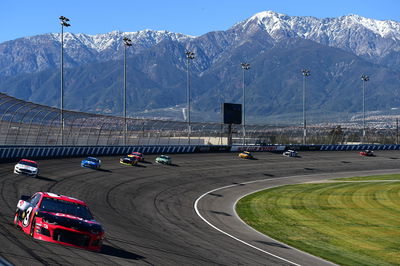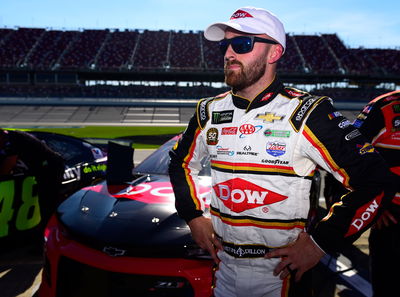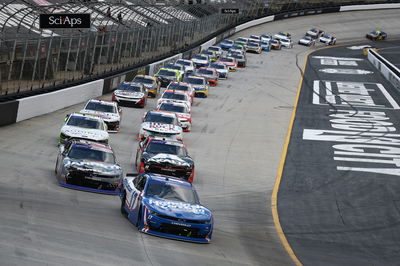NASCAR brings back single-car qualifying for ovals
NASCAR will return to single-car qualifying for ovals starting with this weekend's races at the Dover International Speedway.
All three of NASCAR’s top divisions – Monster Energy Cup Series, Xfinity and Gander RV Trucks – will see an end to the group and elimination style format used since 2014. Drivers will be allowed one lap on tracks greater than 1.25 miles in length and two on tracks 1.25 miles or shorter.
Group qualifying will still be implemented on road courses.

NASCAR will return to single-car qualifying for ovals starting with this weekend's races at the Dover International Speedway.
All three of NASCAR’s top divisions – Monster Energy Cup Series, Xfinity and Gander RV Trucks – will see an end to the group and elimination style format used since 2014. Drivers will be allowed one lap on tracks greater than 1.25 miles in length and two on tracks 1.25 miles or shorter.
Group qualifying will still be implemented on road courses.
The new higher-downforce lower horsepower Cup package has resulted in a few controversial qualifying sessions in 2019. This comes due to the cars getting a larger draft off a leading vehicle.
That caused some gamesmanship because nobody wanted to be the lead car in a group.
The most significant case came at Auto Club Speedway in March when none of the Top 12 drivers reached the start/finish line to make a qualifying attempt. Times from the previous session determined the order which put Austin Dillon on pole.
Problems arose again two weeks later at the Texas Motor Speedway which caught the attention of series officials. NASCAR used A band-aid solution at the Richmond Raceway round and cut each session to five minutes to encourage drivers to take laps without waiting.
Scott Miller, NASCAR senior VP of competition, noted that single-car qualifying was the only solution and is positive about its prospects.
“It was a unified decision between broadcasters, teams and NASCAR,” said Scott Miller, NASCAR senior VP of competition.
“One of the other things to make a compelling program out of it is we’ve seen the use of the ghost car (on television). That’s going to be a big element in presenting a quality show. I think fans are going to be able to see which drivers drive in deep, which drivers roll the middle faster and get off the corners faster and really give the talent in the booth something to talk about.
“Another interesting aspect is every team has a good shot of getting covered during the qualifying session. We’re building in a few two-minute breaks to where TV can get some spots in and not break away from live action. That’s one of the goals in this, and I think with those designated spots and breaks we will be able to present almost a whole qualifying session live without going away.”
The starting order from the previous race will determine the qualifying order. Positions 21-40 will be made up of the drivers that started 1-20. Spots 1-20 will comprise the balance of the competitors.
Single car qualifying was only in use at Daytona and Talladega due to multiple crashes during its initial implementation at the Daytona 500 in 2014.











